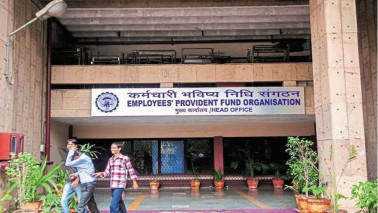Markets may be falling or rising, but with your SIPs happening on autopilot, you not only stay invested but also make sure you don’t let fear and greed rule your decisions. SIPs also completely eliminate the need to time markets.
Vidya Bala
FundsIndia.com
Most of you may be familiar with systematic investment plans (SIPs), but for those who aren’t - a Systematic Investment Plan or a SIP is a periodic investment in a mutual fund for a fixed time frame, which has the potential to earn higher returns. SIPs are a great way to invest, and here’s why:
● SIPs are pocket-friendly - You can start a SIP with as little as little as Rs 500 a month.● SIPs give you flexibility - You can choose how much you’d like to invest, the date of your investment, how many months you want to invest for, and even the frequency of your investment (weekly, monthly, quarterly).
● SIPs inculcate investing discipline - When you set up a SIP, your investments take place regularly, despite how markets are doing.
Markets may be falling or rising, but with your SIPs happening on autopilot, you not only stay invested but also make sure you don’t let fear and greed rule your decisions. SIPs also completely eliminate the need to time markets.
SIPs are a great tool to use when investing, no matter which direction the markets are heading. In today’s volatile market or any volatile market phase, in particular, it’s important to keep calm and SIP. Don’t panic and stop them.
This is because by investing regularly through a SIP, you can average out the cost of investing. When markets are high, for your SIP amount, you will end up buying fewer units as the NAV of your fund may be higher, but when markets are falling, you can buy more units for the same amount as the NAV of your fund may be lower.
This is known as rupee cost averaging, and this makes any time a good time to invest as it minimises your exposure to market fluctuation.
Moreover, there are several SIP strategies you can still follow to make the best of your investments. If you have a lump sum to invest, you can consider parking it in a liquid fund for higher yields, and set up an STP for over 4-5 months to deploy this in an equity fund. The liquid fund will have to be from the same fund house.
The advantage of STP is that you don’t have to allow a large sum to sit in your savings bank and earn low-interest rate. A liquid fund gives you slightly higher return than a savings bank and you can still systematically transfer into equity.
You can also use step-up SIPs where you increase the investment by a certain percentage or by saying Rs 500 or Rs 1000 on a half-yearly or annual basis. This way, even when you do not have an adequate surplus now you can always increase your savings over a period of time.
As long as your fund choice is good, keep your SIPs running. Do an annual review of your funds and if there are underperformers, first stop SIPs in them and restart right away with a better performer that you already hold.
A year or so later, you can consider exiting the fund in which you stopped SIP if its performance continues to remain poor. In all this, the key does not stop your SIPs based on market conditions. After all, the very idea of SIP is to beat the market movements.
Disclaimer: The author is Head – Mutual Fund Research, FundsIndia.com. The views and investment tips expressed by investment experts on moneycontrol.com are their own, and not that of the website or its management. Moneycontrol.com advises users to check with certified experts before taking any investment decisions.





